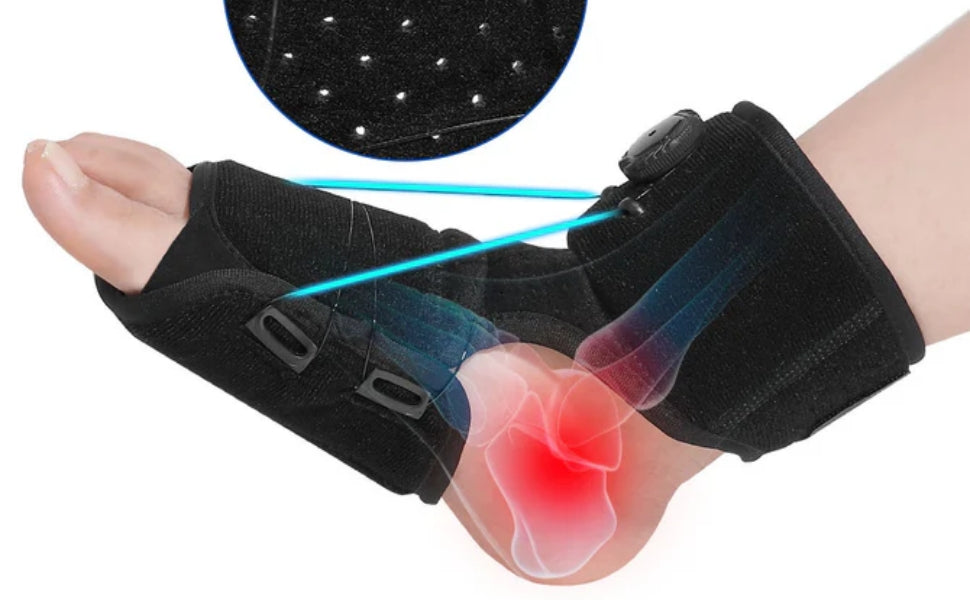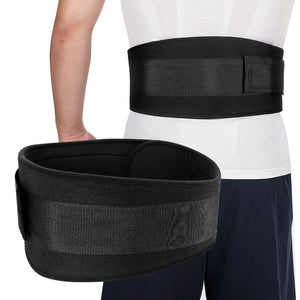How to Know if Broken Ankle?

You're engaged in a sports match. You trip and tumble right before you can kick the ball. Your ankle starts to hurt really bad all of a sudden. Now you’re asking how to know if broken ankle. Is it fractured, or did you just sprain it? Unsure about symptoms of broken ankle vs sprained ankle? That's what we'll explore in this article.

Symptoms of Broken Ankle vs. Sprained Ankle
It's critical to recognize the specific sort of damage affecting your ankle. It might just be a slight sprain. But you should not completely rule out the possibility of breaking. The most typical symptoms you may experience and their variations are discussed here.
- Pain: A break causes more pain than a strain. One of the first things you'll immediately notice. A fracture could result in greater pain than a sprain.
- Bruising and swelling: Expect swelling from both injuries. However, if there is a break, it will be much more serious. There will likely be bruising in the area as your ankle becomes swollen.
- Bearing weight: Ankle sprains should not prevent it from supporting some weight. However, it isn't the case if you break your ankle. This is yet another crucial feature that clarifies the diagnosis of an ankle break.
- Abnormal alignment: If the alignment of your ankle is off, it's probably a fracture.This is the clear distinction between an ankle fracture and an ankle sprain.
Common Causes of Ankle Fracture
You should be knowledgeable about the possible dangers and reasons why ankle fractures occur. It will, therefore, be simpler for you to assess whether you are in danger. If you suffer an ankle fracture, you will also understand why the fracture occurred.
1. Falling or Slipping
Someone who falls and lands awkwardly with their ankle in an unusual position may break. This is the outcome of your ankle's motion when landing following a fall. That's what happens when you slide. It's likely that even after just mopping, the floor you're walking on is still damp. Ankle fractures are a possible result of slipping and falling in an uncomfortable position.
2. Direct Impact or Trauma to the Ankle
Trauma may result from something hitting your ankle quickly or with significant weight. That is a direct blow to the ankle that might break the bone. In contact sports, this kind of reason frequently comes into play.
3. Chronic Stress Injuries and OveruseIf you overuse your ankle regularly, it’s something that can make you more susceptible to injuries. This especially accounts for cases where you regularly experience stress injuries in the area.
Types of Ankle Fractures
Not every ankle fracture is the same. Here are some of the most common types that you may experience:
1. Lateral MalleolarThe fibula fractures or breaks, resulting in this. Your ankle joint's outermost bone is where it is placed. Out of all the many varieties, this is the one that occurs the most commonly.[1]
2. BimalleolarWhen you have this type, it means the fracture affects your medial and lateral malleoli. Specifically at the ends of the tibia and fibula. [2]
3. TrimalleolarThe most severe and agonizing of the three types of fractures is this one, accounting for about seven percent of ankle fractures. Three separate fractures are seen in your ankle. This fracture affects the posterior, lateral, and medial malleoli.[3]
Treatment for Ankle Fractures
Early treatment is something you shouldn’t ignore. This can lessen the chance of problems developing, such as chronic malformation. Additionally, it guarantees that you have less pain, stiffness, and edema.
1. Immediate ActionWhen you notice the injury, stop what you’re doing. If you’re playing sport, get off the field. You also have to stop bearing weight on your affected ankle. Ask someone to help you get to a spot where you can sit down. If there’s a break in the bone, you don’t want to make it worse by continuing to put weight on your ankle.
2. First AidThe next step is first aid. Get a cold compress or an ice pack. Apply it to your ankle. This will help with the swelling that happens after a fracture. Cold compress also reduces the pain you feel after the fracture.
3. Medical InterventionIf there’s a fracture, you need a diagnosis and medical treatment. Get to a doctor. They can order an X-ray imaging test. That’s going to show the physician how the fracture looks and how severe things are. That’s especially important if you want to understand how to know if broken ankle and you are aware of the symptoms. If you get special equipment to help with recovery, be sure to ask your care provider can you walk on a broken ankle with a boot. They may advise you to rather take it slow and rest for a few days.
Best Ankle Brace from Fivali
If you’ve got a fractured ankle, you need a supportive brace. That’s going to help ease pain and reduce stiffness. It also facilitates the healing process. The problem is that there are a lot of options that you need to filter through. Fivali understands how frustrating the process can be. This is why we want to share two of the best ankle braces from Fivali.
1. Fivali Ankle Brace Support with Rotatable Adjustment Button - 1 Pack
Maximum support is one of the key elements in this brace. There’s a button that can be rotated to adjust the position of the structure. It’s a great tool to help reduce ankle and foot pain. That’s because the brace actually covers your ankle and a part of your foot. The brace uses lightweight materials. This ensures it won’t weigh your foot or ankle down. You can wear this one on a daily basis. It’s great not just for fractures but also to help recovery when you’ve got an ankle sprain.

2. Fivali Ankle Stabilizer for Sprained Ankle Recovery - 1 Pack
If you’ve fractured your ankle, you need a device that offers better coverage. That’s where the ankle stabilizer from Fivali comes in handy. It provides coverage for your entire foot and your ankle. There are three steps on top of the brace. This ensures you can easily customize how it fits. The sole on this brace has an anti-slip design. It adds more stability when you need to walk. You’ll also appreciate the inner lining that Fivali adds to this brace. It’s super soft against your skin.

Not sure how to know if broken ankle? It’s a good idea to start by assessing the situation. How much pain do you feel? Is there any bruising or deformity? These are some of the signs you may notice. Fivali offers a wide range of ankle braces that can help to stabilize the area. We have been in the business of creating protective gear for more than a decade. We continue to deliver exceptional quality when it comes to supporting your body, protecting, and helping with recovery. Browse the range of ankle braces to get started and see what we can offer you.
References
[1] What to Know About a Lateral Malleolus Fracture. Available at https://www.webmd.com/first-aid/know-about-lateral-malleolus-fracture[2] Bimalleolar Ankle Fractures - StatPearls - NCBI Bookshelf. Available at https://www.ncbi.nlm.nih.gov/books/NBK562254/
[3] Acute Management of Trimalleolar Fracture - PMC - NCBI. Available at https://www.ncbi.nlm.nih.gov/pmc/articles/PMC7864963/













